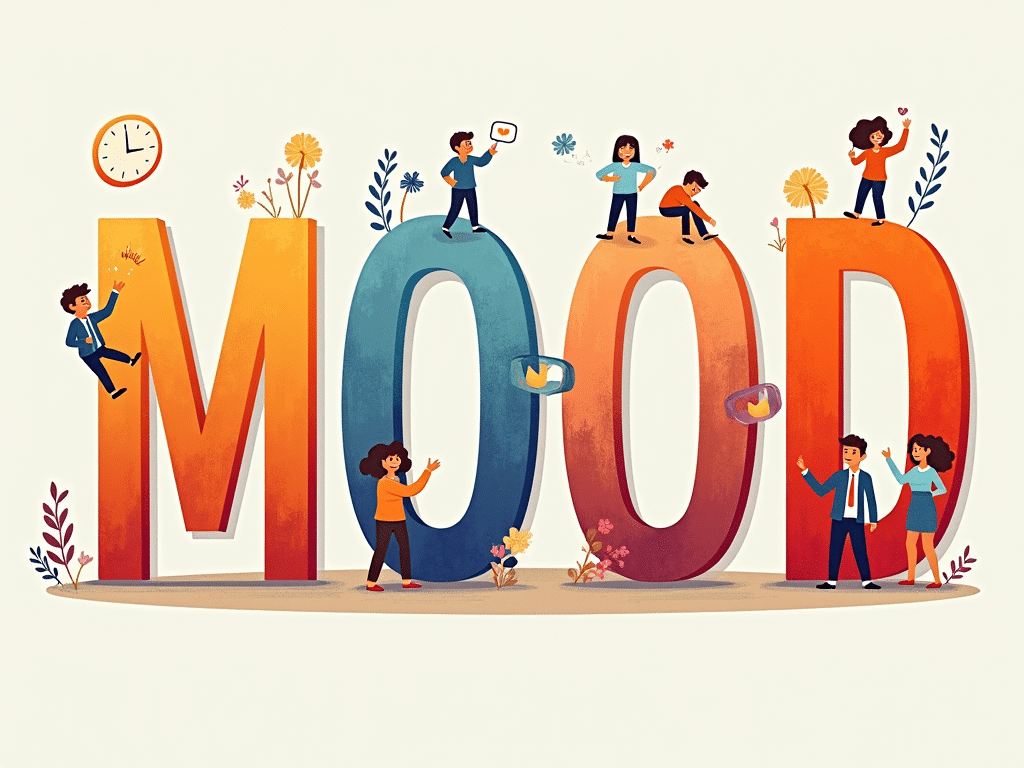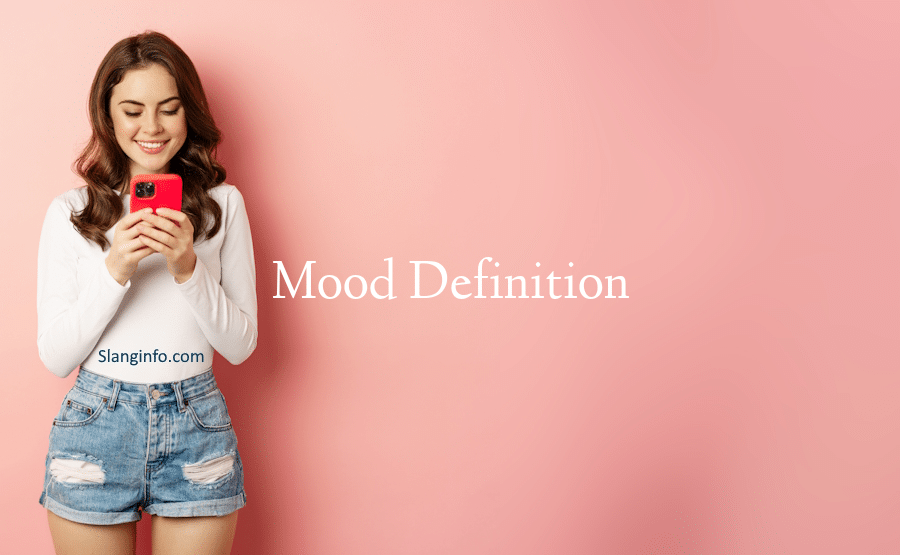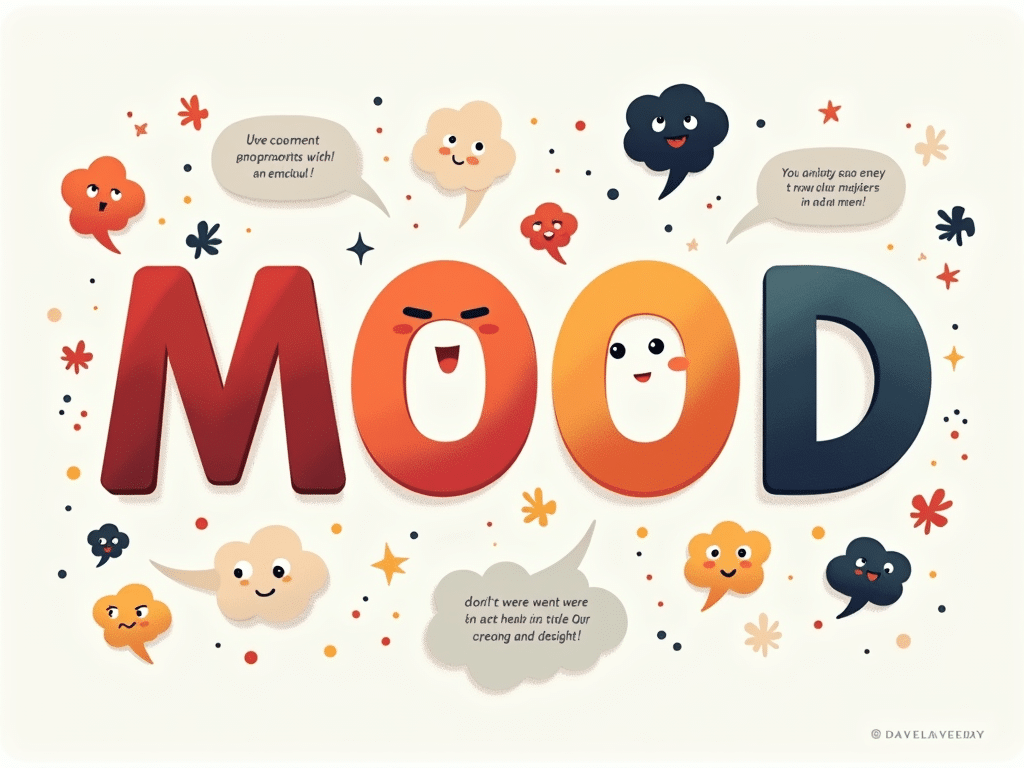Hey there, mood explorers! Ever wonder why some days you’re on top of the world, while others you just can’t shake that “meh” feeling? Well, buckle up, because we’re about to dive into the fascinating world of moods. Whether you’re feeling pogchamp or sadge, understanding your mood can be a total game-changer. Let’s get this mood party started! 🎉
| Key Takeaways | Description |
|---|---|
| Definition | Mood is a prolonged emotional state that influences thoughts and behavior |
| Types | Positive, negative, and neutral moods |
| Influencing Factors | Biological, environmental, psychological, and lifestyle factors |
| Mood vs. Emotion | Moods last longer and are less intense than emotions |
| Management | Lifestyle changes, cognitive techniques, and professional help when needed |
Mood Definition: Understanding the Vibes That Shape Our Lives 🌈

What is Mood?
Alright, let’s break it down. Mood is like the background music of your life. It’s that overall feeling that hangs around for hours or even days, coloring how you see the world and react to things. Unlike emotions, which are usually quick and intense (like when you yeet something in excitement), moods are more like a slow burn.
Here are some key things to know about mood:
- It’s longer-lasting than emotions
- It’s less intense but more pervasive
- It can influence your thoughts and behaviors
- It can be positive, negative, or neutral
Think of it this way: if emotions are like weather (quick changes, intense moments), mood is more like climate (the overall vibe over a longer period). One minute you might feel a burst of happiness (emotion), but your overall mood for the day could still be kinda blah. Make sense?
Types of Moods
Now, let’s talk about the different flavors of moods. Just like ice cream, moods come in all sorts of varieties. Here are the main categories:
- Positive Moods 😊
- Happiness
- Excitement
- Contentment
- Calmness
- Negative Moods 😔
- Sadness
- Anxiety
- Irritability
- Frustration
- Neutral Moods 😐
- Feeling “meh”
- Neither particularly good nor bad
Remember, all moods are valid and serve a purpose. Even negative moods can be helpful sometimes, like when sadness motivates us to make changes in our lives. The key is finding a balance and not getting stuck in one mood for too long.
Factors Influencing Mood

So, what makes our moods swing like a pendulum? Turns out, a lot of things! Here are some major mood influencers:
- Biological Factors: Your hormones and brain chemicals (neurotransmitters) play a big role. Ever feel extra moody during certain times of the month? Yep, that’s hormones at work!
- Environmental Factors: The weather, your social interactions, and even the news can affect your mood. Rainy days got you feeling sadge? You’re not alone!
- Psychological Factors: Your thoughts, beliefs, and past experiences all contribute to your mood. If you’re constantly thinking negative thoughts, it’s gonna be hard to stay in a good mood.
- Lifestyle Factors: Things like sleep, diet, and exercise have a huge impact on mood. Ever notice how cranky you get when you’re running on 3 hours of sleep? Yeah, that’s not a coincidence.
Fun fact: Did you know that even the foods you eat can affect your mood? Chocolate, for example, contains compounds that can boost your mood. So next time someone judges you for that chocolate bar, just tell them you’re practicing mood management! 🍫
The Science Behind Mood
Okay, time to put on our lab coats and get a bit sciency (don’t worry, I’ll keep it simple). Your brain is like a super complex mood-making machine. Different parts of your brain work together to create and regulate your moods.
Here’s a quick rundown:
- The amygdala processes emotions
- The hippocampus plays a role in mood regulation
- The prefrontal cortex helps control emotional responses
But the real MVPs of mood are neurotransmitters. These are chemicals in your brain that help transmit signals. The main mood-related neurotransmitters are:
- Serotonin (the “feel-good” chemical)
- Dopamine (the “reward” chemical)
- Norepinephrine (the “alertness” chemical)
When these chemicals are in balance, you’re more likely to experience positive moods. When they’re out of whack, that’s when things can get a bit bruh.
Another cool thing to know about is circadian rhythms. These are like your body’s internal clock, and they can have a big impact on your mood. Ever notice how your mood tends to follow a pattern throughout the day? That’s your circadian rhythm at work!
Mood vs. Emotion
Alright, let’s dive a little deeper into the difference between mood and emotion. I know, it can be confusing, but I promise it’s not as complicated as trying to understand Gen Z slang. 😅
Here’s the tea:
- Emotions are short-lived, intense reactions to specific events or stimuli. Like when you see a cute puppy and feel an instant burst of joy. 🐶
- Moods are longer-lasting, more general feelings that aren’t always tied to a specific cause. Like feeling grumpy for a whole day without really knowing why.
But here’s the thing: moods and emotions are like BFFs. They influence each other all the time. A series of positive emotions can contribute to an overall good mood, while a bad mood can make you more likely to experience negative emotions.
And get this: your mood can even affect your decision-making and behavior. Ever made a risky choice while in a super good mood? Or snapped at someone when you were feeling irritable? Yep, that’s your mood pulling the strings behind the scenes.
Measuring and Assessing Mood
So, how do you know what mood you’re in? Is there like a mood thermometer or something? Well, not exactly, but there are a few ways to measure and assess mood:
- Self-report methods: This is basically just checking in with yourself and being like, “Hey, how am I feeling today?” You can use mood scales or questionnaires to track your moods over time.
- Observational methods: Sometimes, other people might pick up on your mood before you do. They might notice changes in your body language, facial expressions, or behavior that indicate a certain mood.
- Mood tracking apps: There are tons of apps out there that can help you track your moods. It’s like having a little mood diary right on your phone. 📱
Measuring your mood can be super helpful for identifying patterns and triggers. Like, if you notice you’re always in a bad mood after scrolling through Instagram for an hour, that’s a pretty good sign that maybe it’s time to cut back on the social media. 👀
Mood Disorders
Now, let’s talk about when moods become a bit more serious. Mood disorders are mental health conditions characterized by persistent and intense mood states that interfere with daily life. The two most common mood disorders are:
- Depression: Persistent feelings of sadness, hopelessness, and loss of interest in activities. It’s like being stuck in a fog of “meh” all the time. 😞
- Bipolar Disorder: Alternating episodes of extreme highs (mania) and lows (depression). It’s like riding an emotional rollercoaster without being able to get off. 🎢
Mood disorders are different from the normal ups and downs of life. They’re more severe, longer-lasting, and can seriously impact your ability to function. If you think you might be dealing with a mood disorder, it’s super important to reach out for help from a mental health professional. There’s no shame in getting support! 💪
Managing and Improving Mood

Alright, so how can you be the boss of your own moods? Here are some tips:
- Lifestyle changes: Getting enough sleep, eating a balanced diet, and exercising regularly can work wonders for your mood. It’s like giving your brain the premium fuel it needs to function at its best. 🌟
- Cognitive techniques: Your thoughts have a huge impact on your mood. Learning to identify and challenge negative thought patterns can help you maintain a more positive outlook. It’s like being your own personal hype man! 🗣️
- Seek professional help: If you’re struggling to manage your moods on your own, don’t be afraid to reach out to a therapist or counselor. They can help you develop coping strategies and work through any underlying issues.
Remember, taking care of your mental health is just as important as taking care of your physical health. You deserve to feel your best! 🌈
Conclusion
Phew, that was a lot of info! Let’s recap:
- Mood is a prolonged emotional state that influences your thoughts and behaviors
- Moods can be positive, negative, or neutral, and are influenced by a variety of factors
- Understanding your moods can help you make better decisions and improve your overall well-being
- If you’re struggling with persistent or intense moods, don’t hesitate to seek help
At the end of the day, your moods are a part of what makes you, you. Embracing the full range of your emotional experiences is a key part of living a rich and fulfilling life. So go ahead and feel all the feels – the good, the bad, and the meh. 😌
Just remember: you’re not alone in this wild ride of moods and emotions. We’re all just trying to navigate this crazy thing called life, one mood at a time. So be kind to yourself, reach out for support when you need it, and don’t forget to stop and appreciate the good vibes along the way. 💖







